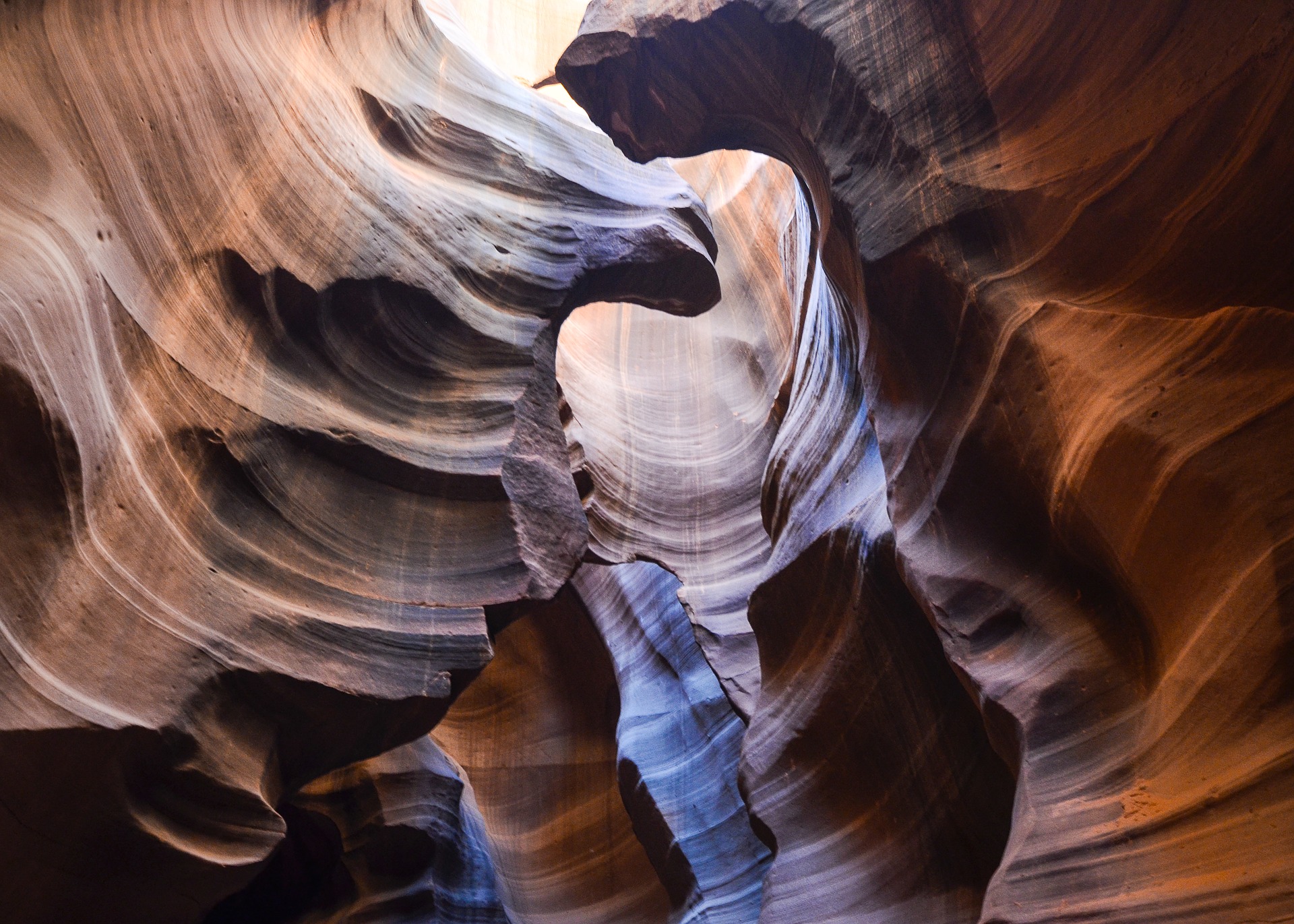The American Southwest offers a plethora of unique travel opportunities from desert escapes to mountain hikes. One of the most incredible destinations that is still relatively undiscovered is Antelope Canyon near Page, Arizona. Nestled into Navajo Land near the Arizona-Utah border, this must see slot canyon is a geographical feature that welcomes exploration.
Antelope Canyon was formed by floodwater wearing away at the sandstone over time. The canyon walls are incredibly smooth, with a wave like or spiral structure. Slot canyons were made famous by the 2010 film “127 Hours,” which tells the story of Aron Ralston’s treacherous self-rescue while canyoning alone in Utah.

It’s easy to visit Antelope Canyon as part of a tour, but there a few things to consider when planning your visit.
Planning Your Visit
Upper vs. Lower Antelope
Antelope Canyon is divided into two parts- Upper and Lower Antelope. They are nicknamed the Crack (Upper) and the Corkscrew (Lower). The two parts require separate admission fees, and they are not accessible from the same location or tour. It’s worthwhile to visit both parts of Antelope Canyon to maximize your experience, but if you don’t have time then there are a few factors to consider before deciding on one.
One of the biggest differences between the canyons is accessibility. Lower Antelope Canyon is within walking distance from the parking area, but it does have multiple flights of stairs and ladders to get into and out of the canyon. Lower Antelope is also much more narrow than Upper Antelope, so you should be comfortable with tight spaces and some mild climbing. Upper Antelope, by contrast, is a short drive (usually on an open bed truck or in an SUV) from the parking area, but there are no stairs to access the canyon. The upper canyon is much wider and easier to navigate, so it might be a better choice for you if you have trouble walking for long distances or climbing on uneven surfaces.

Depending on the purpose of your visit, one canyon might better suit your needs. Photography tours are available on both sections of Antelope Canyon, but Upper Antelope is better known for its dramatic light beams that create stunning photographs. And because the canyon is wider, Upper Antelope offers more space to set up a tripod, making photography easier.
If you are seeking a more unique experience, Lower Antelope tends to be less crowded, and the tour feels a little more like an exploration with the narrow passageways and steep staircases. It is also significantly longer than the Upper Antelope tour.
Getting a tour guide
It’s not possible to visit either canyon without a Navajo tour guide. You wouldn’t want to find yourself living your own version of ‘127 Hours!’
Many companies offer advance bookings, but they are not always necessary. If you are visiting in peak season (June, July, and August) then definitely plan ahead and reserve your tour. For tours during the shoulder or low seasons, you will usually be able to show up on the day and join the next available tour. Weekends are always more crowded, so aim to go mid-week if possible.
In addition to the cost of your tour ticket, there is also a Navajo Park Permit Fee. Parking is free on site.
If you plan on using a tripod or monopod for your pictures, you must book a photography tour. These tours allow for more time in the canyon to get your shots, and you are allowed to bring extra equipment. No tripods or monopods are allowed on the standard tours.
Lastly, confirm the time of your appointment if you make an advance booking, because parts of Arizona and Navajo lands do not observe Daylight Savings Time.
Getting to Antelope Canyon
Antelope Canyon is located near Page, Arizona. You can access both Upper and Lower Antelope by traveling 2 miles East of Page on Highway 98. On the north side of the highway is Antelope Point Rd, and access to Lower Antelope Canyon. Upper Antelope Canyon is accessed from the south side of the highway, directly across. It takes approximately 10-20 minutes to travel between the two canyon sites.
Expert Tips
- The best time for capturing light beams is 11 a.m. to 1 p.m. when the sun is at a nice angle in the sky.
- Lower Antelope is usually less crowded, and the tour is significantly longer than Upper Antelope.
- Ask your guide for tips on how to capture great photos (even with your iPhone). Many guides can point out unique silhouettes that are only visible from certain angles.
- Check the weather before your visit as flash floods make slot canyons incredibly dangerous during storms. Lower Antelope is often closed when there is rain in the area.
- *Ken’s Tours for Lower Antelope and Navajo Tours for Upper Antelope. The tours for Upper Antelope tend to meet in downtown Page first, but you can also just drive to the site and wait for the next tour to arrive.
- Be sure to wear appropriate footwear to navigate the canyon, and bring sunscreen and water if you are visiting during the summer months. Most guides wear bandanas in the event of blowing sand within the canyon, so it can be useful to bring one along.

Great Things Nearby
The Southwest is home to many cool geographical features, and many are in driving distance of Antelope Canyon. Make the most of your trip by taking the time to visit some other iconic spots the area has to offer.
Horseshoe Bend
With stunning views of the Colorado River as it winds through the canyon, Horseshoe Bend is an incredible lookout point in Page Arizona. It’s one of the most photographed areas that is easily accessible (just under 10 miles from Antelope Canyon).

Lake Powell
Lake Powell is a scenic reservoir and vacation destination on the Arizona-Utah border. It’s a great spot for boating and water activities, but it’s also convenient for an afternoon hike or short picnic. It’s a little farther from Antelope Canyon at 80 miles, but it’s a great stopover on your way to or from Page.


